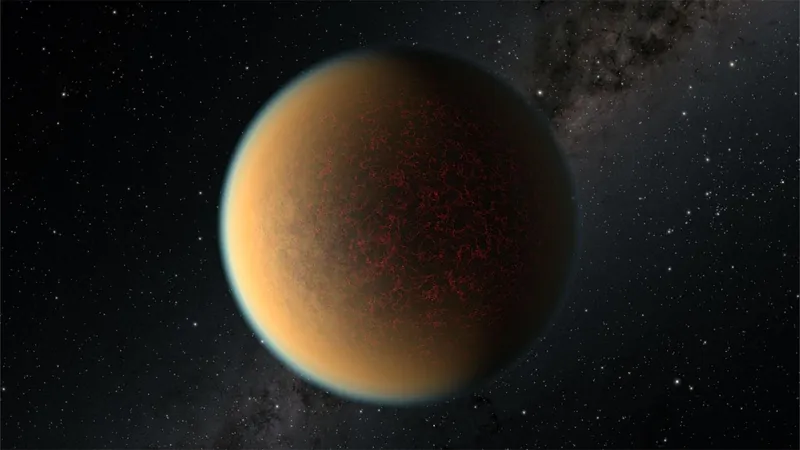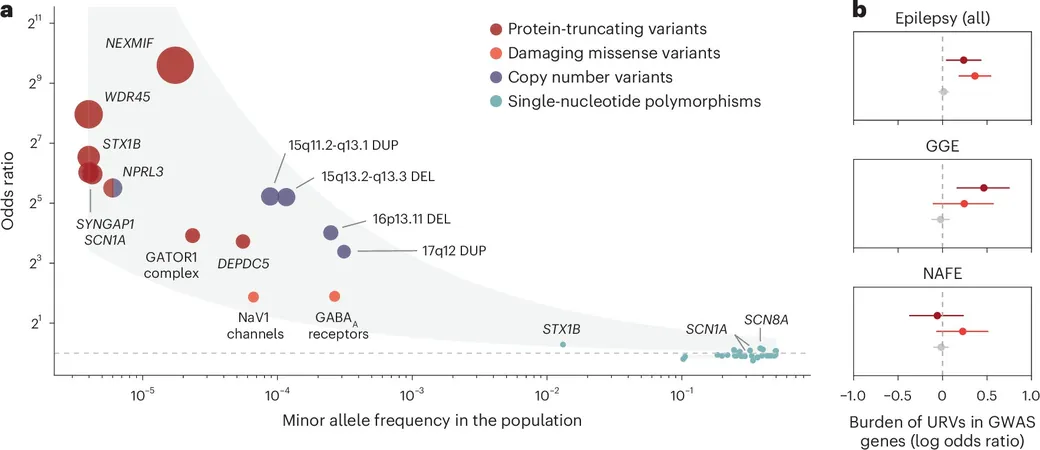
Revolutionary Method Unveiled to Detect Atmospheres of Distant Exoplanets: What Could This Mean for Finding Life?
2024-10-08
Author: Siti
In the quest to find extraterrestrial life, astronomers have long been fascinated by the hunt for exoplanets that share Earth's traits. Central to this effort is the essential question: Do these celestial bodies have atmospheres, a crucial component for habitability? Recent advancements in astronomical methods, specifically with the help of the cutting-edge James Webb Space Telescope (JWST), could offer groundbreaking answers.
A promising study led by University of Chicago Ph.D. student Qiao Xue, under the guidance of Prof. Jacob Bean, has introduced a new technique that simplifies the way astronomers identify atmospheres surrounding distant planets. Published in *The Astrophysical Journal Letters*, this innovative method could revolutionize our understanding of planetary atmospheres and their formation.
The Great Atmosphere Hunt
Researchers have discovered numerous rocky, Earth-like exoplanets, but identifying those with atmospheres has remained elusive. An atmosphere plays a vital role in maintaining temperatures conducive to life by distributing solar heat and protecting planetary surfaces from harsh space conditions. This insight is crucial for determining which exoplanets might support life as we know it.
Previously, astronomers struggled to gather accurate temperature data on exoplanets due to the limitations of available instrumentation. However, JWST's advanced infrared capabilities provide scientists with new tools to assess the effectiveness of a planet’s atmosphere.
How the New Method Works
The study builds upon a technique proposed in 2019 that examines temperature variations on exoplanets. By comparing an exoplanet's actual temperature against a theoretical maximum, researchers can infer the presence of an atmosphere. If the planet's temperature is lower than it could theoretically be, it indicates that an atmosphere is actively regulating heat distribution.
Using this methodology, Xue first applied it to GJ1132 b, revealing that it does not possess an atmosphere. "The measured temperature was too close to the calculated maximum," Xue explained, confirming that this planet is likely uninhabitable.
Why This Method Matters
This new approach is more efficient and reliable than traditional techniques that measure light filtering through the atmosphere, which can produce false positives or negatives due to stellar activity and weather patterns on the planet. As Prof. Bean noted, the advancements offered by JWST simplify the complexities involved in atmosphere detection.
These findings have massive implications. The ability to more accurately discern which distant exoplanets have atmospheres opens the door for more targeted searches for life-supporting environments. With an anticipated data surge from JWST, scientists hope to uncover more trends and patterns in atmosphere formation, enhancing our understanding of the conditions necessary for life.
The Future of Exoplanet Research
As we stand on the cusp of a new era in astronomical research, the implications of this technique are profound. The hunt for habitable exoplanets might finally yield more definitive results, taking us one step closer to answering the age-old question: Are we alone in the universe? With JWST leading the way, the potential for new discoveries is limitless, keeping both scientists and space enthusiasts on the edge of their seats.





 Brasil (PT)
Brasil (PT)
 Canada (EN)
Canada (EN)
 Chile (ES)
Chile (ES)
 España (ES)
España (ES)
 France (FR)
France (FR)
 Hong Kong (EN)
Hong Kong (EN)
 Italia (IT)
Italia (IT)
 日本 (JA)
日本 (JA)
 Magyarország (HU)
Magyarország (HU)
 Norge (NO)
Norge (NO)
 Polska (PL)
Polska (PL)
 Schweiz (DE)
Schweiz (DE)
 Singapore (EN)
Singapore (EN)
 Sverige (SV)
Sverige (SV)
 Suomi (FI)
Suomi (FI)
 Türkiye (TR)
Türkiye (TR)